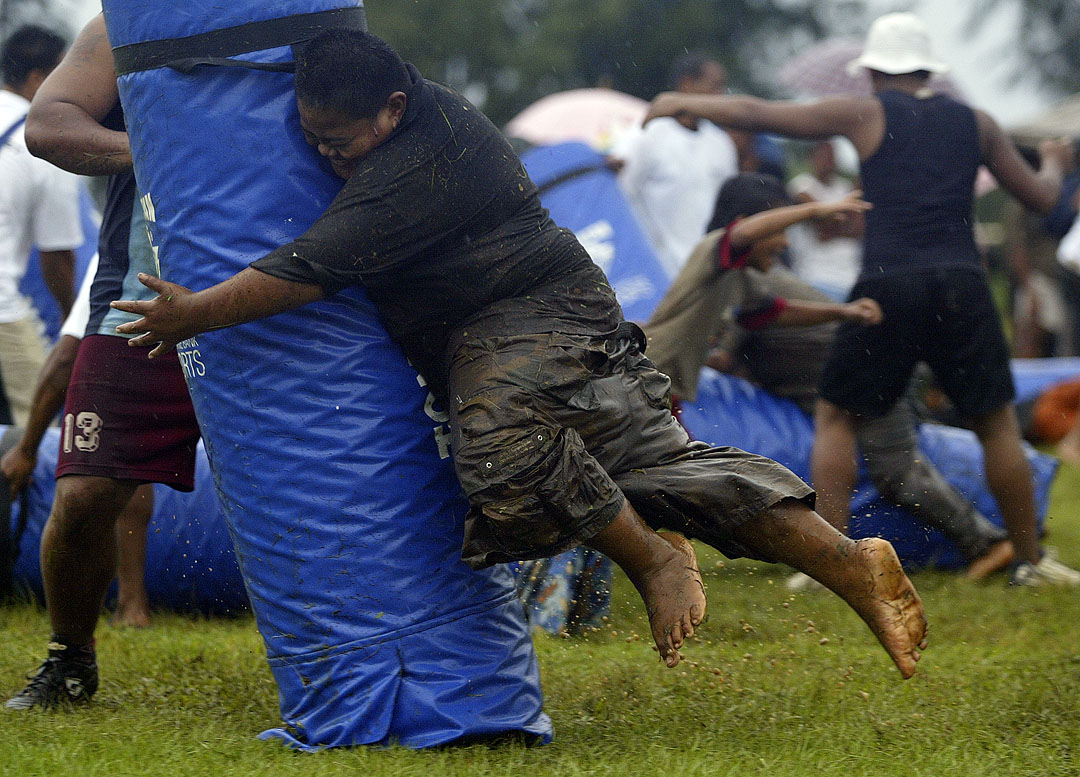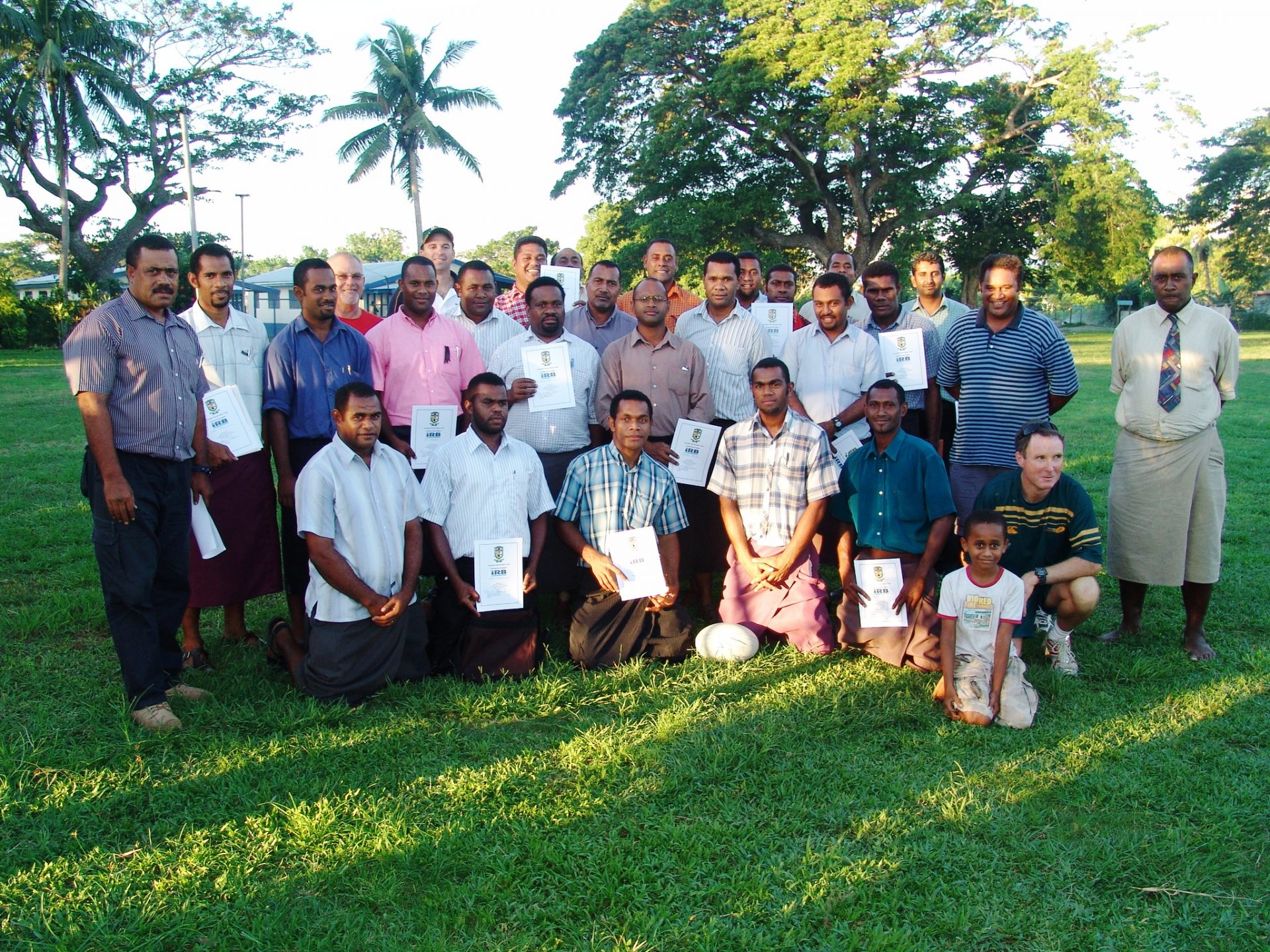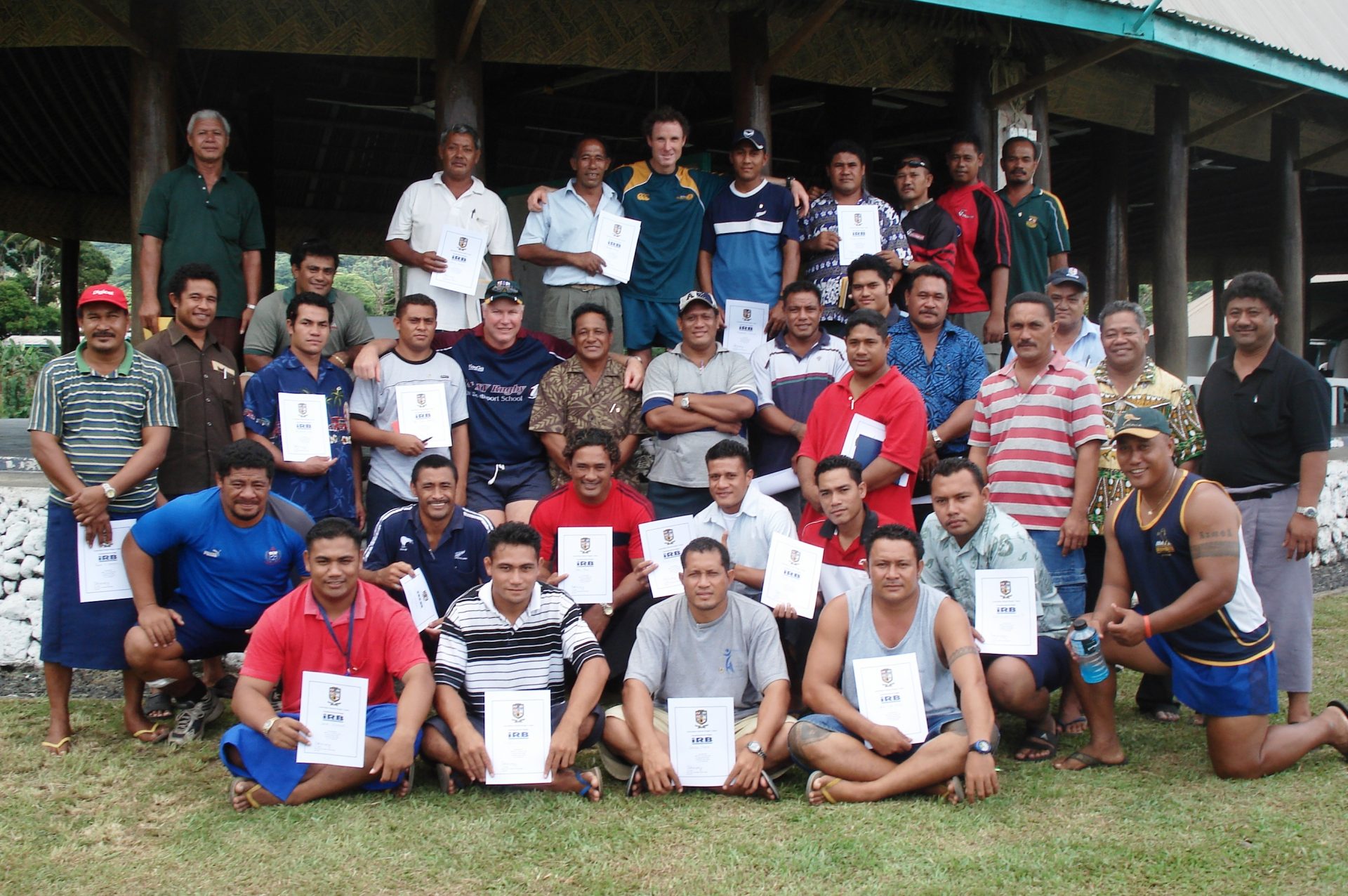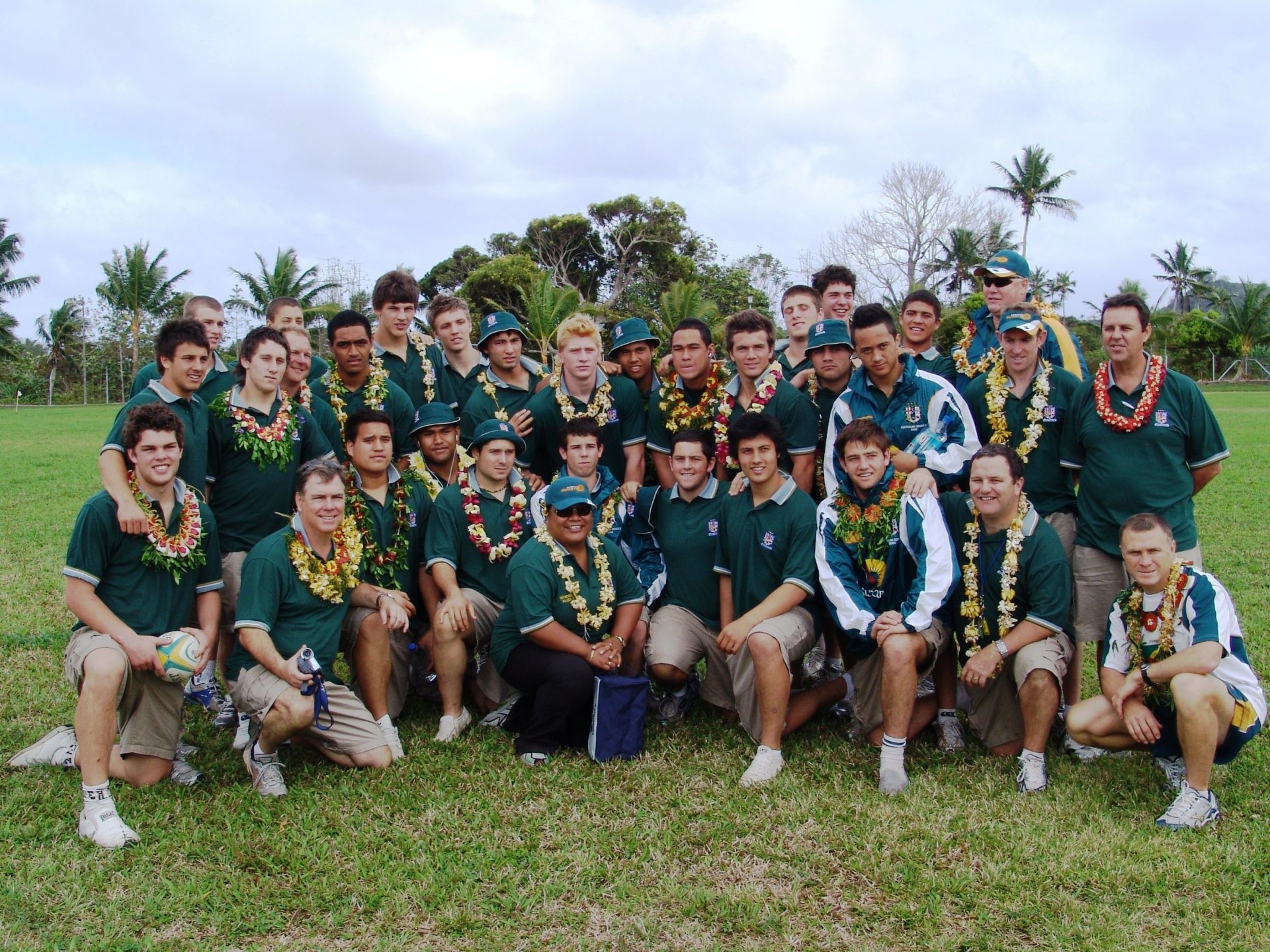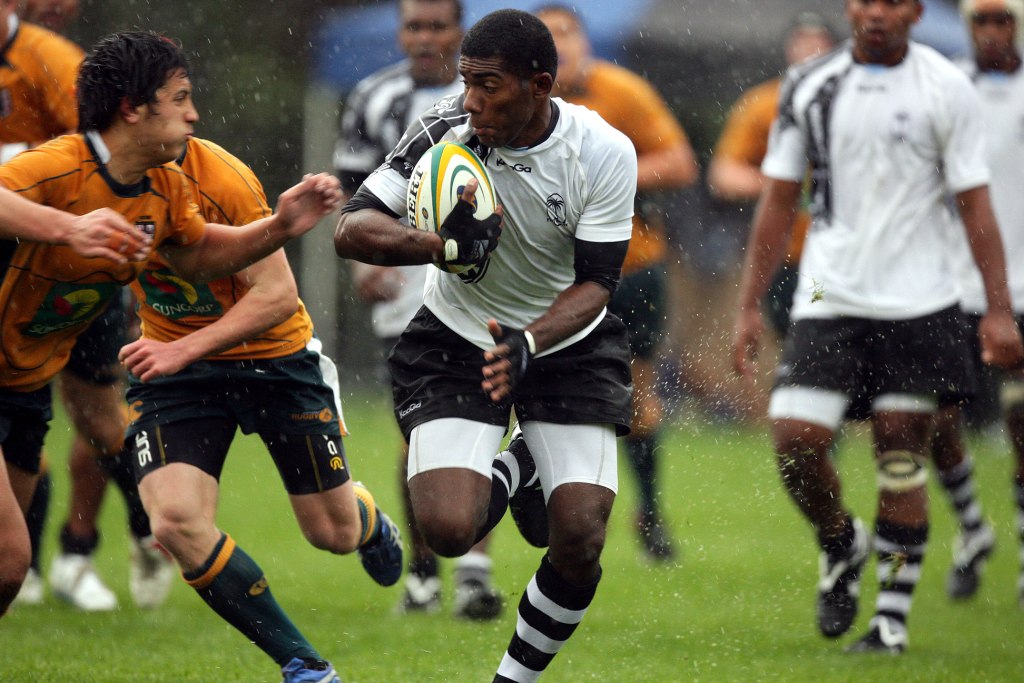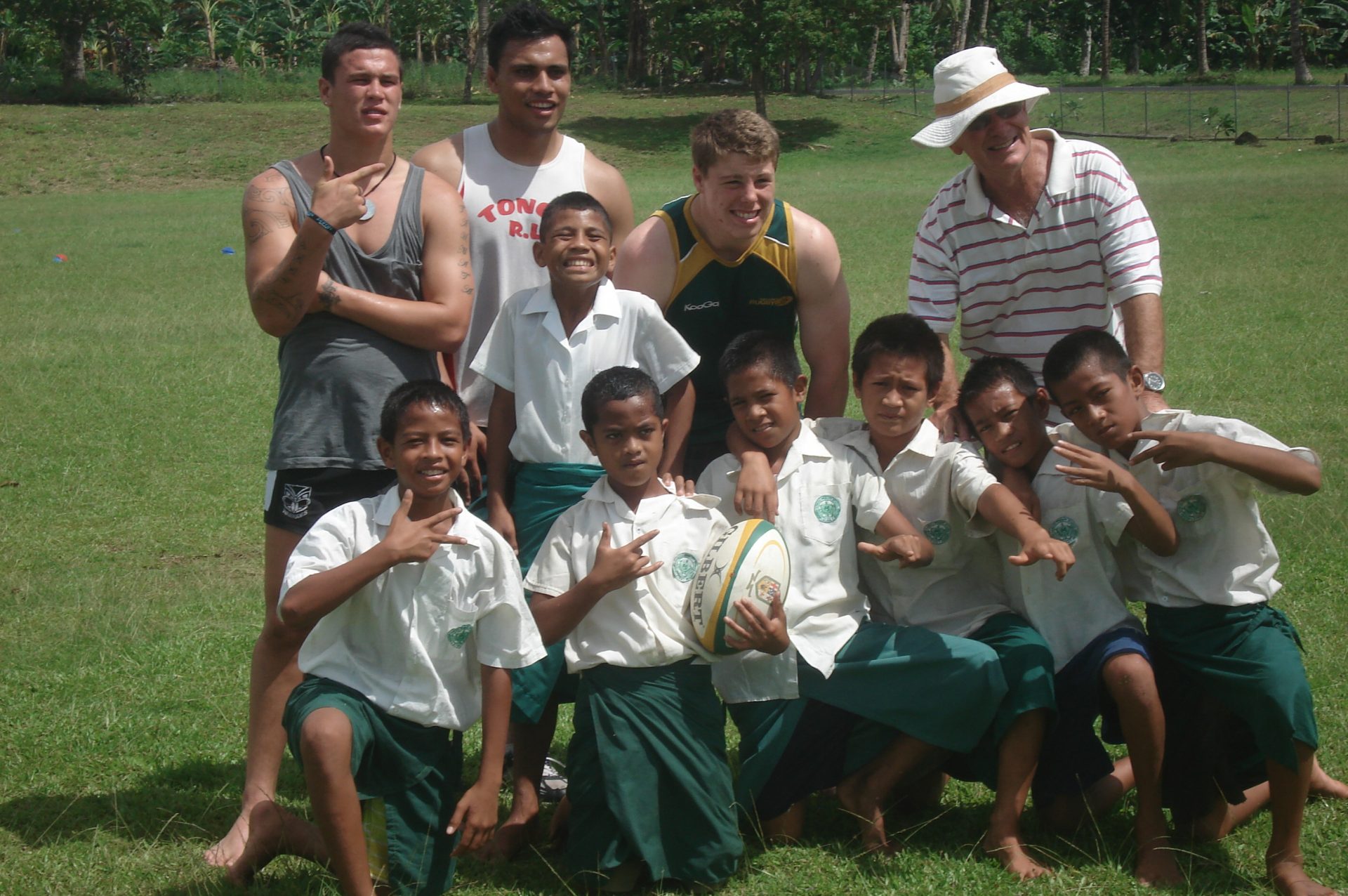By Bernie Carberry
The Australian Schools tours to the UK are probably the recognised highlight of the involvement of Australian Schools players. Much has been chronicled over the years about these tours. The current annual ‘battle’ and association with Pacific partner New Zealand is also a ‘rich vein’ through our history.
However, the connection with our other Pacific neighbours should not be overlooked.
The 1977-78 UK tour gave us our first Japan experience as the first tour match was against Japan High Schools. In 2001 Samoa toured Australia. The following year 2002 Australia toured Tonga on the way to New Zealand and in 2003 Fiji toured Australia.
There was a pattern established of Australia touring one of Samoa, Fiji or Tonga on its way to New Zealand.
The following is a précis of tours to and from these nations. The match results can be found elsewhere in this publication.
JAPAN
1977 Tour to UK via Japan
1984 Japan tours Australia
1989 Australia Division II tour Japan
1992 Australia Division II tour Japan
2001 Tour to UK via Japan
2005 Japan tours Australia
2006 Japan tours Australia – No Test
2007 Japan tours Australia – No Test
FIJI
2003 Fiji tours Australia
2006 Tour to Fiji pre New Zealand
2008 Fiji tours Australia
2010 Fiji tours Australia
2012 Tour to Fiji pre New Zealand
2013 Fiji tours Australia
2014 Tour to New Zealand – Tri Nations with Fiji
2016 Tour to New Zealand – Tri Nations with Fiji
2017 Fiji tours Australia
SAMOA
2001 Samoa tours Australia
2004 Tour to Samoa pre New Zealand
2005 Samoa tours Australia
2007 Samoa tours Australia
2010 Samoa tours Australia & Tour to Samoa pre New Zealand
2012 Tour to New Zealand – Tri Nations with Samoa
2015 Samoa tours Australia
2016 Tour to Samoa pre New Zealand
TONGA
2002 Tour to Tonga pre New Zealand
2003 Tonga tours Australia
2006 Tonga tours Australia
2008 Tour to Tonga pre New Zealand
2009 Tonga tours Australia
2010 Tour to New Zealand – Tri Nations with Tonga
2012 Tonga tours Australia
2016 Tonga tours Australia
PACIFIC CONFERENCES
The Australian Schools and New Zealand Schools have had annual Combined Executive meetings for many years. These have coincided with the annual clash between the two nations. At this meeting in December 2003 it was decided to plan a Pacific Conference (initially) every two years. Australian Secretary John Rae volunteered to be the co-ordinator. It was hoped that these meetings could be open to as many Pacific nations and that the ARU would be consulted about these contacts. Andy Conway from the ARU and Treasurer of Federation of Oceania Rugby Unions (FORU) was most helpful in this regard.
After the first three years (2001 – 2003 incl.) of Australian Schools’ official contact and tour arrangements with Fiji, Samoa and Tonga there was an historic Pacific Conference held in Lautoka, Fiji in 2004.
This conference had delegates from the Schools Rugby Unions of Australia, Fiji, New Zealand, Samoa and Tonga. It was chaired by New Zealand’s Garry Chronican, who is the Chairman of New Zealand’s Secondary Schools Rugby.
It was opened by former Wallaby captain John Eales who told the meeting he recognized the important role that Schools’ Rugby played, even though he had never represented his state or country at this level. In fact it was this failure to represent at schoolboy level that motivated him to excel after he left school. He said that the Pacific Island countries were important to the development of world rugby, but unfortunately “the rich get richer and the poor get poorer”.
John also acknowledged the work of two rugby bodies which are not directly connected with Schools Rugby.
The Pacific Islands Rugby Alliance (PIRA), which was set up in 2002 as a basis of co-operation between the Fiji, Samoa and Tonga Rugby Unions. Later it added Niue and the Cook Islands. PIRA supplied players to the Pacific Islanders team. Both PIRA and the Pacific Islanders team were disbanded in 2009.
The Federation of Oceania Rugby Unions (FORU) is the official body of the International Rugby Board (now called World Rugby) charged with rugby development in the Island nations mentioned above and the following – American Samoa, New Caledonia, Papua & New Guinea, the Solomon Islands, Tahiti, Vanuatu & The Territory of the Wallis and Futuna Islands. It is now called Oceania Rugby. Mr Andy Conway, a long serving official of the ARU has been very helpful in ASRU’s relations with the Pacific Islands as he was also Treasurer of FORU.
Not all the participants at this Conference were exclusively Schools Rugby people. Kinisiliti Fotu (Regional Development Manager Tongan RU), Sakopo Lolohea (CEO Tongan RU and Acting CEO PIRA) and Tuilagi Saipele Esera (CEO Samoan RU) were delegates.
Some of the Schools’ delegates there who became very close friends with Australian Schools Rugby for many years were:
Suliasi Lutubula – President Fiji Schools RU; Koroi Qionimacawa – Secretary Fiji Schools RU; Mrs Aiga Poisa Esera – Executive Member Samoan Schools RU.
It is worth noting that an important issue discussed at this Conference was Rugby Scholarships. Saipele Esera stated that Island boys, when offered scholarships to New Zealand (predominantly), their families generally believe it is a great opportunity. However there are ramifications as 60% return to their home country untrained and this creates a social problem.
There are many critics who have said that Australia’s and New Zealand’s association with the Pacific Islands is as much about poaching talent as it is about enhancing rugby relations. Similarly it can be argued that arranging matches with these countries made it possible to prepare better for the annual clash with New Zealand. There have been far too many extra benefits and good will from our relationship with these countries. It has only been financial constraints which have changed the pattern of touring.
At the 2004 Conference it was agreed to arrange matches on an annual basis and ‘dovetail’ these to take into account the schedule of hosting for FORU Under 18’s Tournaments. In order to minimise overall touring costs the country which hosts the FORU tournament would accept an invitation to tour either New Zealand or Australia. The remaining two countries would host Australia and New Zealand separately.
Australia honoured this commitment and as can be seen hosted all three countries as well as touring all three countries as per the “2004 Lautoka Agreement” in the years following.
The 2004 Conference in Fiji coincided with New Zealand touring there. At the same time Australia was making its first tour of Samoa and were hailed as “the first Australian team to visit Samoa”. The Wallabies have never visited Samoa.
OTHER CONFERENCES
For the following three years there were successful Conferences held with the five nations – Fiji, Samoa, Tonga, New Zealand and Australia.
• 2005 in Canberra
• 2006 in Auckland
• 2007 in Sydney
SOME SIGNIFICANT EVENTS
In 2006 Australia toured Fiji for the first time. The following is part of the Manager, the late Graeme Dedrick’s report:
Game 1 v Fiji President’s XV at Suva Grammar.
The field was very wet, muddy and slippery making it very difficult to handle the ball with a moderate wind blowing. Temperature was in the low twenties which was cool for this time of the year for Fiji. This was to be a very hard encounter with excellent defence from the President’s Team.
Final score Australia 15 – Fiji 6
The Suva Grammar School were excellent hosts over the three days, providing an after-match feast in the School Assembly Hall that was prepared by the girls from the senior years Home Economics class.
Thursday saw the group leave for Lautoka and settle into the Waterfront Hotel for the next three nights in preparation for Test against Fiji U 18. Conditions over the next few days were trying with hot weather continuing and high humidity. Early morning and late afternoon training sessions were planned and this minimized the affect the hot weather had on the players.
Game 2 v Fiji U18 at Churchill Park, Lautoka on Saturday 30 September
Churchill Park provided an excellent flat service that drained well after all the rain for the game. The afternoon cleared to an overcast, humid and temperature around 30 degrees. The hot conditions were going to be a big challenge with a big emphasis prior to the game on good hydration and relaxing. Before leaving the hotel a jersey presentation was made by Paul Carozza to each member of the squad. Paul emphasized the team principles that were later to be invaluable when we were to be challenged by some” never say die” Fijians.
The game was a very open game with the Fijians trying to stretch the defence repeatedly and trying to run the ball from all areas of the field. At half time Australia was in front 3 nil from a Luke Evans penalty. Early in the second half Kurtley Beale set up a perfectly timed pass off his outside shoulder to put Peter Betham through a gap from 30metres out to break the line and score under the posts. Luke Evans converted. Fiji scored a late penalty.
Final score: Australia 10 – Fiji 3
The after-match function was held at the Mocambo Hotel a 30 minute bus trip back to Nadi. The group was treated to a magnificent Fijian meal with official speeches to follow. Many people were recognized for their support throughout the tour of Fiji. These included Suliasi Lutubula – President of Fijian Schools, Members of the Fijian Executive, Fijian Team Management and in particular our Liaison Officer who was assigned to us for the tour Taione Vunicaga who was an outstanding ambassador for the Fijian Rugby Union and was a great help to all our management staff.
In 2007 Australia welcomed both Samoa and New Zealand and of particular note hosted a Samoa – New Zealand match on the Central Coast of New South Wales. This was the first time there had been a Tri-Nations model including a Pacific Island team.
New Zealand eventually adopted this model. The first of these tours there was in 2010 when both Tonga and Australia toured New Zealand. In 1988 – the Australian Bi-Centenary year – Australia hosted both England and New Zealand for a Tri-Nations event.
In 2008 Australia visited Tonga for the second time. Significantly Schools Rugby is centred on the main island of Tongatapu, on which the capital city of Nuku’alofa is located. The Headmasters Association of the main schools on that island control Schools Rugby, mainly independent of their “Mother Union”.
There was no Tonga Schools Rugby Union. All matches are traditionally played on the National Stadium, Teufaiva Stadium in Nuku’alofa.
Australia was requested to play the first match against the Vava’u Island XV on this beautiful outer island and not in the capital.
This meant ASRU organised a special charter flight for the day. On arrival the team was met by a brass band. At the match all the local school children came as spectators. Half of these schools were assigned to barrack for Australia. A very happy cultural event which will long be remembered by all who were there. That day was a significant event in the history of the Australian Schools Rugby Union. It was the only national team ever to go to the outer islands of Tonga.
In 2010 the Australian team toured Samoa. It was decided that the team would not be billeted and would not stay in a hotel. In 2004 the team were billeted for the first few days and moved into the Pacifica Inn. Aggie Grey’s is the best place in Samoa but out of reach of the budget. Instead a Guest House or Bed & Breakfast (The 1848 Princess Tui Inn) was booked and extra catering provided by the Administrator and his wife Roz Carberry. Some of this was apparently not up to the standards demanded by ARU High Performance but the boys were happy with the “boarding school” experience.
A feature of this tour was a trip to the far side of the island of Upoulo to conduct a coaching clinic in a Primary school. That side of Samoa had been ravaged by a tsunami in 2009. The team was welcomed in true island style and got to see the damage which occurred only 12 months earlier.
Masuisui Vave Lene, President of Samoan Schools Rugby and Principal of Faleata College co-ordinated this trip and organised a final test match feast in true island style before the 1 am flight to New Zealand. The following is an account by team captain Steve Cummins.
On the 19th of September 2010, the squad departed for a tour of Samoa & New Zealand following domestic victories against the touring Samoan and Fijian U/18 teams.
Upon arrival in Apia, the initial shock of the tropical heat and humidity was soon forgotten and after a short bus trip we arrived at the Princess Tui Inn, our home for the next week.
The absence of Internet and TV meant the team had plenty of time to enjoy each other’s company and often turned to good old fashioned card games for entertainment. Upon introduction by Jed Gillespie, drop poker became a hit and multiple ‘tala’ was traded back and forth.
Unfortunately, news broke that the Princess Tui Inn was lost in an unexplained fire shortly after our stay. Rumour has it the fire was linked to a heated dance competition held between a young local and our outside centre Malietoa Hingano on one of the final nights. (For the record Mali emerged victorious)
One of the many highlights of the tour was the chance to witness the aftermath of the tsunami that had hit the island one year prior to our visit. The picturesque beauty of Lolamanu beach was starkly juxtaposed by the damage directly across the street. Despite the natural disaster, the locals remained upbeat and happy and it was an honour to conduct a coaching clinic at a nearby school. The experience brought the team even closer together and reinforced just how lucky we were to have the opportunity to travel abroad and play a sport we love.
On field the tour was a great success as well as we managed to win both of our tour matches against two big and physical Samoan teams.
ASRU has made many friends in the Pacific Islands. Some of these have been mentioned above. ASRU Administrator at the time would like to acknowledge the following as special friends.
• In Fiji very little contact would have eventuated but for the work of Taione Vunicaga who was an employee of the Fijian Rugby Union until illness took him from the job.
• In Samoa little would have happened without Uaea Laki Apelu who definitely was not an employee of the Samoan “Mother” Union or the Schools Union.
• In Tonga Tu’amelie Faaitu’a, who was Manager of their touring teams to Australia in 2003 and 2006. Tu’amelie was the previous Headmaster of Tonga College and Secretary of the Principal’s Association and then became the CEO in the Ministry of Education.
COACHING IN THE PACIFIC
During tours to these three island nations there were also significant coaching days run by the Australian coaches in local primary schools. These always included the Australian players who found the experience very rewarding.
As part of the agreement to assist in the Pacific Islands, Australian Schools has spent specialist coaches to run “Coach the Coaches” Courses.
1. 2006 in Fiji conducted by Pat Langtry and Matt Brennan.
2. 2007 in Samoa conducted by Pat Langtry and Rob Nowlan and in Tonga in conjunction with the Macquarie Bank with Matt Brennan. Guy Reynolds AM was the Director of Macquarie Sports and was also a member of the ASRU Foundation Board and a great friend of Australian Schools.
3. 2008 in Fiji conducted by Pat Langtry, Tim Wallace and the late Graham Dedrick.
4. 2009 in Tonga conducted by John Papahatzis and Brendan Allardyce.
5. 2010 in Fiji conducted by Pat Langtry, Jarred Hodges and Bernie Carberry – courtesy of Gullivers Sports Travel. Ken Grover, Director of Gullivers Sports has been a long term member of the ASRU Foundation Board and a great friend of Australian Schools.
6. 2011 in Samoa conducted by Jarred Hodges and Darren Leech and in Tonga conducted Rob Nowlan and Jon Fitzgerald.
All of the above were sent as trained teachers and accredited coaches with the Australian Rugby Union. Apart from Brendan Allardyce and Darren Leech they all had held senior coaching or management positions with Australian Schools’ teams and can be found elsewhere in this publication. All courses were developed by ASRU Directors of Coaching – Matthew Brennan 2006-07 and Pat Langtry from 2008.
It would be remiss not to provide more on the assistance provided by Guy Reynolds mentioned above. He was a great supporter and sponsor of the Australian teams. He particularly had a strong interest in Tonga and took several coaching clinics there.
In 2010 Guy was awarded the Commander of the Crown, Kingdom of Tonga, for services to Pacific Islands’ sports development. He was a significant contributor to the Tongan Schools team specifically as well as coaching mainly in the primary schools.
In 2010 the ASRU instituted the “Reynolds Shield” for games between Tongan Schools and Australian Schools.
MORE ON JAPAN – THE SANIX WORLD YOUTH RUGBY TOURNAMENT
Whilst this tournament does not involve any of our Australian Schools representative teams, I believe it has an important place in the history of ASRU.
The tournament has been going since 2000, when The Kings School, Parramatta were invited privately to a competition involving Japanese High School Teams and the teams from foreign countries. Whilst the invitations to the countries are sent to the senior unions of those countries, in Australia the selection of the team to attempt has been entrusted to the ASRU.
The following are the schools have attended:
2000 The Kings School, Parramatta NSW
2001 St Joseph’s College, Hunters Hill NSW
2002 Randwick Boys High School NSW
2003 St Edmund’s College, Ipswich QLD
2004 St Stanislaus College, Bathurst NSW
2005 The Southport School QLD
2006 Marist College Canberra ACT
2007 Westfields Sports High NSW
2008 St Edmund’s College, Canberra ACT
2009 Prairewood High School NSW
2010 The Hills Sports High School NSW
2011 Australia withdrew because of tsunami in Japan
2012 St Stanislaus College, Bathurst NSW
2013 St Joseph’s Nudgee College QLD
2014 St Edmund’s College, Canberra ACT
2015 Brisbane Boys College QLD
2016 St Edmund’s College, Canberra ACT
2017 No Australian team
2018 St Augustine’s College, Brookvale NSW
2019 Waverley College NSW
The Kings School and Westfield’s Sports High have won this highly competitive tournament. Whilst it probably isn’t relevant to list the results as the teams weren’t Australian representative teams some background is important in recording the work of ASRU and its relationship with our Pacific Rim neighbour – Japan.
Sanix is a Japanese corporation specialising in technology, in particular sanitation and associated engineering. It is based in Fukuoka City on the island of Kyushu in western Japan. (Nagasaki is also on this island.) It has some other interests including a brewery and solar electricity. Mr Shin-ichi Munemasa was the owner of Sanix and also a lover of rugby. Sadly he died in 2017 and has been succeeded by his son. Because of his love of sport he had developed the Sanix Sports Corporation, and has a full time professional rugby team in Japan
Mr Munemasa was a genuine lover of rugby for all the right reasons – fellowship, learning to live together, cultural exchange, educational opportunities, development of the game in Japan etc.
This tournament is such a unique cultural and rugby experience – “once in a life time’ – therefore, while staged at a difficult time an individual school can “make the sacrifice” as a “once off”, with enough planning. The tournament is played during a period in Japan called Golden Week.
As well as playing rugby, meeting and living with other players from different cultures and languages, Mr Munemasa arranges for excursions as well. The significant excursion each year funded by Sanix is to the atomic bomb site in Nagasaki.
Below is an abridged account written by Randwick Boys High School student Denesh Hewa-Gamage in 2001. Of interest this team was coached by Karen Mould, daughter of former ASRU coach Geoff Mould.
The Opening Ceremony was held … in the Main Stadium. The place was buzzing with Rugby fans, Rugby players, entertainers, officials and street markets. The teams marched into the stadium one by one and when we entered smiling and waving to the crowd. Ms Mould proudly said that we showed great Australian spirit. After other long speeches by Japanese officials and a speech by our captain John Vizzone (who bravely spoke in Japanese), it was time to get the matches started.
We were the first match against the home team, Higashi Fukuoka in the Main Stadium. It was a very tough game, and we lost 30-19. We were surprised at the skill and organisation that the Japanese players displayed. We took it all in and saw the result as a lesson for our next match.
The rest day was a day most of us will remember for a long time. Rugby was stopped for the day so that all the teams could go to Nagasaki. This was the first time on our trip that we really got to see Japanese culture and their way of life. First on the agenda was Oura Catholic Church which displayed some splendid stained glassed windows. Then we went on to Glover Garden, which contained the Museum of Traditional Performing Arts, various statues and fountains and other historical houses.
After a brief spot of souvenir shopping, we moved on to the Atomic Bomb Museum. This place held a lot of remains from the WWII bombing of Nagasaki as well as other nuclear warfare items. The place was very quiet, because most of the people were lost for words as they viewed the destruction and damage caused by the bomb. There were computerised simulations and videos of the bombing as well as photos of badly injured residents. For many of us, it was a truly sad sight. Outside the museum was Peace Park, which was located on the actual bombsite. It held many memorials, fountains and statues.
When we weren’t playing or training, we either relaxed around the village or watched other matches. There were different styles of Rugby played by different countries and that made the games interesting to watch. The Japanese were serious about their Rugby as shown in their army-like training routines and their endless hours of practice. We were just focused on doing our best and gaining experience as a team.
We all got dressed up in our blazers for the farewell party. Featuring again were the long speeches by the officials and many performances from each country. Our performance consisted of us singing the school song, the national anthem and Waltzing Matilda. It wasn’t the best sounding performance, but it did show a lot of pride. The highlights included New Zealand’s song, dance and Haka, Fiji’s vibrant song and dance and a Japanese human pyramid.
During our stay we formed many good relationships with other teams, especially with members from Ireland, New Zealand, South Africa and Fiji. Sayonara!
In 2003 St Edmund’s College Ipswich, Headmaster Jim Lucey wrote this:
One of the most memorable occasions experienced by the St Edmund’s Rugby group was the visit to Nagasaki. Nagasaki is about two hours by bus from Fukuoka on the island of Kyushu.
First impression of Nagasaki is the normality of it. Like most cities in Japan it is very busy and parts are very modern. But when you arrive at the Atomic Bomb Museum, which marks the epicentre of the Atomic Bomb which was detonated on the fateful day, 9th August 1945, you are able to feel a certain eeriness about the place. The whole Museum is exceedingly busy, but is also exceedingly quiet, and remains so as you wander through the various parts and read of the terrible things that happened to the City and people of Nagasaki those fifty eight years ago.
It was interesting to observe the emotional impact that it had on young men in the group and to hear some of the comments they made after seeing the displays or listening to the commentators. It was certainly a lesson to them of the ugliness of war and of the destruction of innocent people. Victims of a terrible decision and unlucky victims at that, as Nagasaki was never meant to be the target. The target that day was meant to be Kokura, but cloud cover prevented the dropping of the bomb on that city.
Since 2013 there has been a Girls Sevens introduced at Sanix. There are only four overseas teams invited each year. The Australian teams are listed below.
2014 Sunshine Coast club team QLD
2015 Brisbane State High QLD
2017 Aranmore College WA
2018 St Clare’s College ACT
Our many involvements with our Pacific schools’ rugby neighbours has been a rich and rewarding experience which hopefully continues. Like many things in rugby it is not inclusive of only “battles on the park’.
